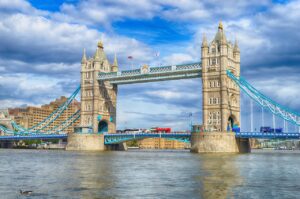Cardiff City Council will not implement a Clean Air Zone (CAZ) in the city and instead will roll out measures worth £32m to combat air pollution.
The authority chose this direction following an independent survey commissioned to forecast future NO2 pollution levels in the city that identified just one street (Castle Street) where EU legal limits are likely to be breached in future years.
However, levels of roadside nitrogen dioxide (NO2) are already close to the legal limit in the city. Within the city centre Air Quality Management Area (AQMA) and in particular Westgate Street, the council’s latest monitoring at residential locations showed an annual average value of 38.2 micrograms per cubic metre. The legal limit is 40 micrograms per cubic metre.
Cllr Caro Wild, cabinet member for Strategic Planning and Transport, defended the proposals, saying ‘this doesn’t mean to say we don’t have a problem in the city, we do.’
‘We may be within legal limits across the city, but the cleaner we can make the air the better it will be for everyone,’ she said.
‘We need to be clear that we need to decrease the number of cars that travel through the city centre, whilst increasing the space available for public transport and active travel.’
Castle Street, CardiffThe cabinet will be presented with an outline business case on Thursday, March 21, and if approved, the authority will apply to the Welsh Government for the necessary funds needed for the two-year programme, which includes:
- Replacing the oldest and most polluting buses with electric buses- costing £1.8m.
- Introducing a Bus Retrofitting Scheme for bus operators in Cardiff to upgrade older buses so they meet Euro 6 engine emission standards – costing £1.4m.
- Major changes to both Castle Street and Westgate Street and the city centre loop to allow for more efficient movement of public transport and increasing active travel capacity in the City Centre – costing £18.9m.
- A revised taxi policy to ensure that all applications to grant a ‘new vehicle license’ or for a ‘change of a vehicle on a current license’ are only approved for vehicles that meet the latest Euro 6 emission standards – costing £5.5m.
- Improvements to Active Travel and increased 20 mph areas – costing £4.5m.
Chair of Healthy Air Cymru, Joseph Carter, said he was disappointed by the announcement.
‘Charging polluting vehicles to enter cities are recognised as being one of the most effective means of reducing transport emissions,’ he said
‘We therefore believe that the introduction of a Clean Air Zone is vital if we are to address the dangerous levels pollution across the city.
‘Many people are still being poisoned by harmful levels of pollution and we hope that Cardiff Council reconsiders it decision in favour of a more comprehensive and long-term plan that protects those most vulnerable to the effects of pollutants, both now and in the future.’
















